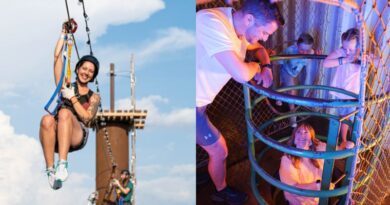Good Shepherd Students Problem-Solve In New Lab

This semester, students at Good Shepherd Episcopal School have been able to create high-tech presentations using three-dimensional models and green-screen video capability, on topics ranging from space travel to the Underground Railroad.
We did mention that they’re only in middle and elementary school, right?
In April, the Preston Hollow school launched its SPARQ lab, which stands for Solving Problems and Asking Real-world Questions, and has already integrated the technological tools into its curriculum at every grade level.
“Our sign-up sheet is pretty booked solid,” said Julie McLeod, the school’s director of technology. “It’s very much being used and leveraged.”
The goal is to give students a more immersive experience with new technologies, while incorporating some hands-on educational games, as well.
The idea for the lab came from Dave Copps, a GSES parent and CEO of Brainspace, a Dallas-based technology firm. He learned about SPARQ and the Makerlab concept more than a year ago and shared his vision with school officials, who were enthusiastic.
“Kids are learning differently today. It’s much more experiential. The world is changing, and our kids need to change, too, in terms of how we educate them,” Copps said. “This thing just kind of took off. The school, to their credit, just took it and ran.”
The project was funded through a grant and parent donations. Copps also contributed some software. The school, meanwhile, redesigned part of its library to house machines including printers capable of creating 3D models, a video room with a green screen, and a 3D scanner for prototypes.
While the Makerlab concept has gained popularity around the country, it’s not typically introduced to children as young as those at GSES, a school of about 600 students in kindergarten through eighth grade.
“We’re looking at innovative thinking and inter-disciplinary thinking,” McLeod said. “In here, they really get into the work. The intensity is beyond compare. We’ll be able to do research in a lot of different ways.”
For example, the SPARQ lab gives lower-school science coordinator Laura Cole a different method of teaching her project on the solar system to third-graders.
“They’re teaching themselves and we are facilitators,” Cole said. “Instead of me handing them information, they’re figuring it out. I’m having fun and they’re having fun.”
This story originally appeared in the June issue of Preston Hollow People, on racks now.








